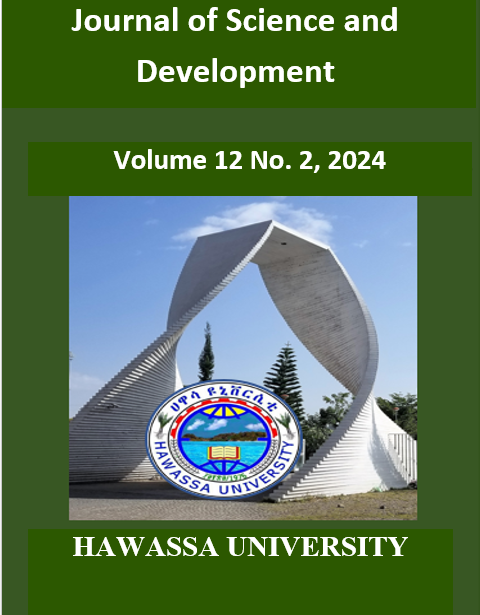Prevalence of Retained Foetal Membranes and Associated Risk Factors in Cross Breed Holstein Friesian Dairy Cows Managed in Small and Large Scale Dairy Farms of Selected Districts of Sidama and Oromia Regional States
DOI:
https://doi.org/10.20372/b1k27e37Abstract
A retrospective study was carried out to analyze the prevalence and risk factors associated with retained fetal membranes (RFM) in HF crossbred dairy cows managed under various farm scales and farming systems in selected districts of Southern and Oromia regional states. A multi-stage sampling technique was employed to select farms and cows. A total of 120 farm households were selected for household survey. The perceptions of farmers on incidences of RFM, risk factors and possible mitigation practices were collected using the household survey. Prevalence of RFM was estimated by using data from: 1) monthly monitoring of smallholder dairy farms; where a total of 500 calvings were recorded between September 2019 and May 2020; 2) farm records on large scale dairy farms. The result shows that out of the total calving, 69 (13.8%) had RFM. RFM progressively and significantly increased with the advances in age of cows, showing 9.2%, 14.4%, 15.4% and 15.3% respectively, for age groups 2-4, 4-6, 6-8 and >8 years. With increased parities, prevalence of RFM also increased showing 6.9%, 13% and 74.3% respectively, for parity category 1-2, 3-6 and >7. The prevalence of RFM in cows was recorded for poor and medium body conditions as 18.6% and 4.3%, respectively. RFM was also associated with sex of calves born, 10.7% for female and 17.5% for male calves born. The prevalence of RFM was also affected by blood levels of HF crossbred cows where 50%, 75% and 87.5% crossbred had 32.1%, 12.1% and 13.3% RFM, respectively. In conclusion, the prevalence of RFM in the present study area was high, requiring special attention to be given by considering important predisposing factors. In this study, the impacts of other predisposing factors, such as nutritional status of cows, were not considered which might require further studies.
Downloads
Published
Issue
Section
License
Copyright (c) 2024 Sintayehu Yigrem

This work is licensed under a Creative Commons Attribution 4.0 International License.
The author(s) of the individual articles remain the copy right of their articles.

